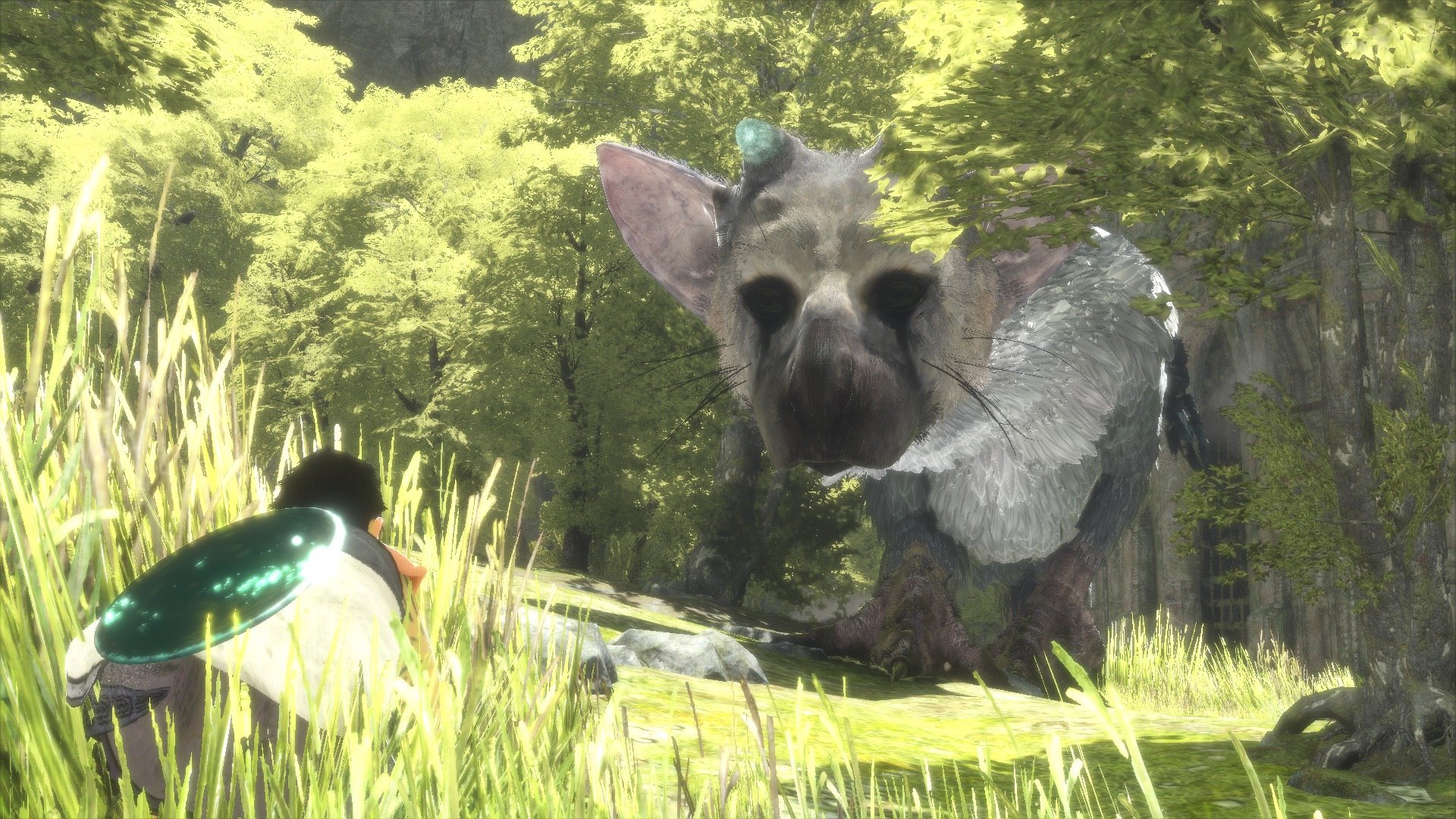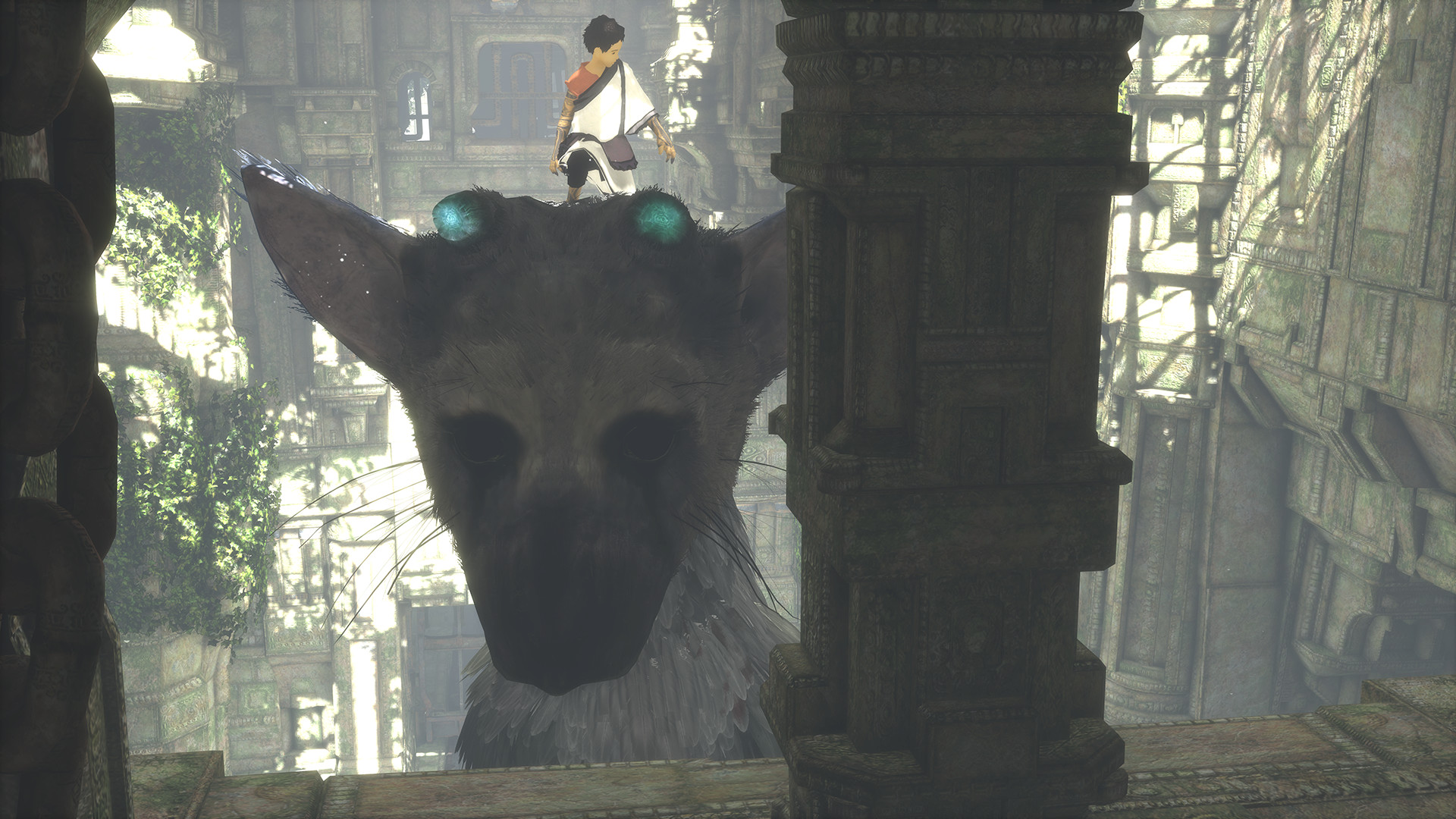Review: The Last Guardian
Written by Ben Vollmer
Everything about The Last Guardian feels memorable. From our seemingly normal protagonist to our majestic sidekick, everything about the game is just different. It isn’t always good, and it defies a lot of the industry standards that encompass other large releases. But damn, if there aren’t moments of this game that will last you a lifetime.
Let’s get something clear right off the bat: there is very little actual gameplay in The Last Guardian, which is weird, because there’s also only a handful of cutscenes. Most of the games ask you to get from point A to point B. This is rarely a struggle (if you can’t figure it out, your A.I. partner surely will), even if it often takes quite a bit of time. The game lasts well shy of 15 hours, and most of it is walking, slowly climbing, or jumping from one platform to the next. I’d call it a platformer, but the game rarely asks the player to do anything resembling an actual challenge.
If there is something that makes it difficult, it’s the camera and controls. The game’s camera often get pinned behind a rock or Trico’s (the creature that accompanies you through the game) butt, making it nearly impossible to see what you’re doing. Even when you can, the protagonist rarely does exactly what you want him to. Just a young boy, he fumbles about and struggles to accomplish just about anything that isn’t walking forward or climbing straight up and down. It can feel cumbersome, but the struggle might just be the point.

So that’s it. Outside of a late-game shooting mechanic that is used about a dozen times, that’s the entirety of the gameplay. If you’re put off by it now, you’ll definitely be put off by it a dozen hours in.
So what makes The Last Guardian so special? For one, it makes some incredible narrative decisions that aren’t afraid to frustrate the player. Part of the game is communicating with Trico. Much like your protagonist, you can move forward and backward, jump, and climb. Using the exact same control scheme, there’s something lost in translation. You’ll often find yourself pounding the jump command only to watch Trico stare aimlessly into the sky. This sounds annoying because it is. It’s incredibly frustrating to watch to know what’s next, only for Trico to completely ignore your commands. Much like asking your pet dog for their paw, only for them to roll over onto their backs with their bellies held high.
In fact, it’s exactly like that. It may seem like an excuse for bad controls, but by the end of The Last Guardian, it becomes totally apparent that this was an intention design choice. The communication between our protagonist and Trico is clunky and inflexible. Much like dealing with a pet, communication between boy and animal doesn’t come easily. These moments of frustration help forge an important bond, one that helps carry the game through to the end. Perhaps the most interesting thing about this choice is that it seems to work both ways. Often times, Trico will climb to new heights without you, as if showing you what needs to be done next. If you can’t figure out the right way to go, the game often uses Trico’s eye line to point you in the right direction.
So lets talk about Trico, the companion who resembles a griffin had it mated with a rat. The game is gorgeous, even if it’s environments tend to lean toward repetitive. Trico, on the other hand, is one of the single most beautiful and lifelike things to be showcased in a video game. His movements are fluid, his sounds are varied in pitch and length, his facial expressions range from longing to hopeful and, perhaps most importantly, his visual design is incredibly detailed and dynamic. The artificial intelligence attached to Trico is remarkable, striking a balance between intelligent and authentic. At times, you’ll be desperately trying to steer Trico in the right directions. Other times, he will be the one to guide the way. Having your A.I. partner reach a conclusion before you do is such an interesting design choice, because it feels less like an A.I. and more like a human partner that you’re co-oping the game with.

The game also does a resoundingly good job of hiding its platforms. Trico’s “nest” isn’t filled with a lot of variation (which, again, seems to be purposeful) and this can make finding your next landing spot with the protagonist a bit difficult. Instead of looking for distinct platforms, you find yourself climbing up walls with small ridges or windows that might be a little lower than the one’s to its side. It takes special attention to detail to move on, and The Last Guardian does little hand-holding to make it any easier.
There is so much lore in the depths of the “nest” and so many questions that go unanswered. This feels pretty natural, but it’s unfortunate that such a unique idea feels relatively unexplored, even by games end. There’s so much time to fill when guiding the protagonist and Trico through the nest that it seems like SIE Japan would have done well to incorporate more collectibles and bits of information along the way. The end of the game is an emotional roller coaster (much in the way of Team ICO’s last title, Shadows of the Colossus), and it’s an added gut punch because of how connected we feel to our partner in Trico. It all feels so majestic and unexplained, that the showcasing of the vehement bond between boy and beast seems like the only thing of importance.
Score: 7.5
